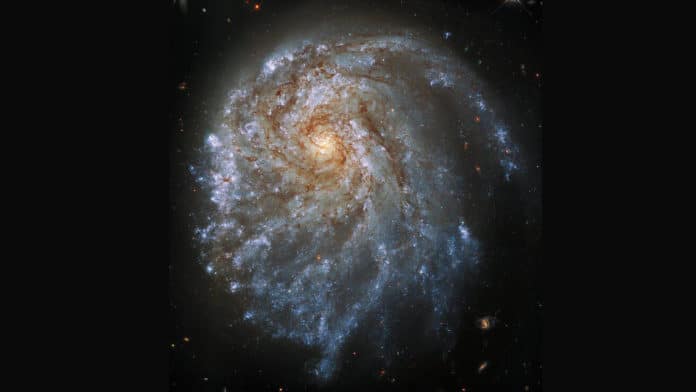In the latest image, Hubble shows a rare contorted appearance of NGC 2276. This appearance is caused by different astrophysical interactions — one with the superheated gas pervading galaxy clusters and one with a nearby galactic neighbor.
The galaxy, which is located 120 million light-years away in the constellation of Cepheus, is a spiral galaxy.
Close observation of the galaxy reveals that this strangely lopsided galaxy is shaped by gravitational interaction and intense star formation.
Interaction of the galaxy with intracluster medium leads to star formation at the edge of the galaxy. This wave of star formation is visible as the bright, blue-tinged glow of newly formed massive stars and gives the galaxy a strangely lopsided appearance.
On the opposite side of the galaxy from this burst of new stars, the gravitational attraction of a small companion is pulling the external edges of NGC 2276 out of shape. This association with the small lens-shaped galaxy NGC 2300 has distorted the outermost spiral arms of NGC 2276, giving the false impression that the larger galaxy is orientated face-on to Earth.
